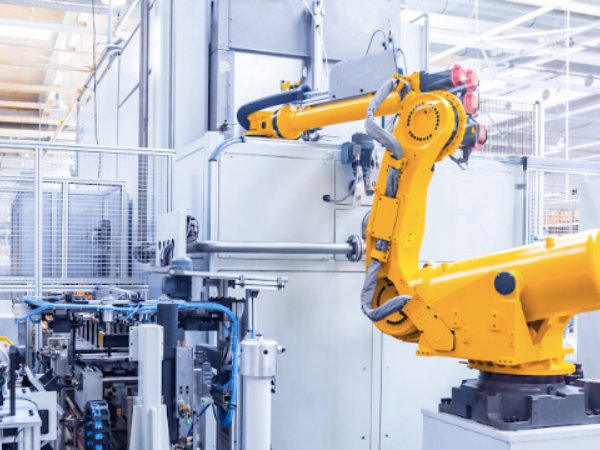Change is never easy, and when it comes to automation, the resistance can be strong. Whether it’s concerns about job security, unfamiliar technology, or perceived disruption, getting buy-in from your team can be a significant challenge. At ALPHR, we’ve worked with countless organisations navigating this transition, and we’ve seen firsthand what works—and what doesn’t. Here’s how you can overcome resistance to automation in your organisation and create a culture that embraces the benefits of innovation.
Understand the Root of Resistance
Before you can address resistance, you need to understand where it’s coming from. People tend to push back against automation for a few key reasons:
- Fear of job loss: Employees worry that machines will replace them.
- Disruption to workflow: Teams are concerned that automation will slow down production before it improves it.
- Scepticism about ROI: Decision-makers may not be convinced that automation will deliver real, measurable benefits.
- Lack of technical confidence: Some employees fear they won’t be able to operate or maintain new automated systems.
By identifying the specific concerns within your organisation, you can tailor your approach to address them directly.
Emphasise Collaboration
One of the biggest myths about automation is that it replaces people. The reality is that automation enhances human work by eliminating repetitive tasks and allowing employees to focus on higher-value activities. Instead of framing automation as a cost-cutting measure, position it as a tool for supporting employees, not replacing them.
For example, in automotive manufacturing, automated testing and quality control can free up engineers to work on product improvements instead of spending time troubleshooting repetitive issues. When employees see automation as an enhancement rather than a threat, they’re more likely to support it.
Involve Employees Early in the Process
Bringing automation into your organisation shouldn’t be a top-down decision with no input from the people it will affect most. Involve employees from the start—whether it’s through discussions, workshops, or pilot projects. When teams feel like they have a say in the process, they are more likely to embrace automation rather than resist it.
Encourage employees to share their insights about where automation could be most beneficial. Those on the factory floor, for example, will know exactly which processes cause the most bottlenecks. By valuing their input, you make automation a shared initiative rather than a forced one.
Provide Training and Upskilling Opportunities
A major source of resistance to automation comes from the fear of the unknown. Employees who are unfamiliar with automation technology may feel intimidated by it, leading to hesitation and pushback. The best way to counteract this is with training and upskilling.
Offer hands-on training that helps employees become comfortable with new automation tools. This could include workshops, mentoring, or even certifications in automation technology. Not only does this make the transition smoother, but it also empowers your workforce with new skills, making them more valuable in the long run.
At ALPHR, we often recommend progressive automation adoption—starting with semi-automated systems that allow employees to work alongside technology before fully automating processes. This gradual transition helps build confidence and reduces anxiety.
Showcase Quick Wins and Measurable Benefits
One of the best ways to overcome scepticism is to demonstrate quick, tangible benefits. Start with a pilot project—one that delivers a clear improvement in efficiency, quality, or cost savings.
For example, automating end-of-line testing in manufacturing can drastically reduce defects, improve traceability and lower rework costs. By highlighting these wins, you create momentum and enthusiasm for further automation projects.
Data is your ally here. Before and after metrics—such as reduced downtime, increased output, or improved consistency—can help make the case for automation in a way that’s difficult to argue against.
Communicate the Bigger Picture
People are more likely to support change when they understand why it’s happening. Instead of just presenting automation as an efficiency tool, connect it to broader company goals:
- Staying competitive in a global market
- Improving product quality and customer satisfaction
- Enhancing safety by reducing manual, high-risk tasks
- Creating a smarter, data-driven manufacturing process
By framing automation as a strategic necessity rather than just a new piece of technology, you help employees see its long-term benefits.
Lead by Example
Change starts at the top. If leadership is hesitant about automation, that attitude will trickle down to the rest of the organisation. Company leaders need to champion automation, not just approve it.
That means:
- Actively discussing automation’s benefits in meetings
- Encouraging cross-department collaboration on automation projects
- Participating in automation training sessions alongside employees
When employees see leadership fully embracing automation, they’re more likely to follow suit.
Turning Resistance Into Opportunity
Resistance to automation is natural, but it’s not insurmountable. By addressing concerns head-on, involving employees in the process, and demonstrating tangible benefits, you can shift the perception of automation from a threat to an opportunity.
At ALPHR, we believe automation isn’t just about technology—it’s about people. When done right, it empowers your workforce, drives innovation, and helps your organisation stay ahead in an increasingly competitive world.
If you’re considering automation but facing internal resistance, start small, communicate openly, and provide the right support. The more inclusive and transparent your approach, the smoother the transition will be.


